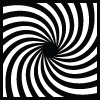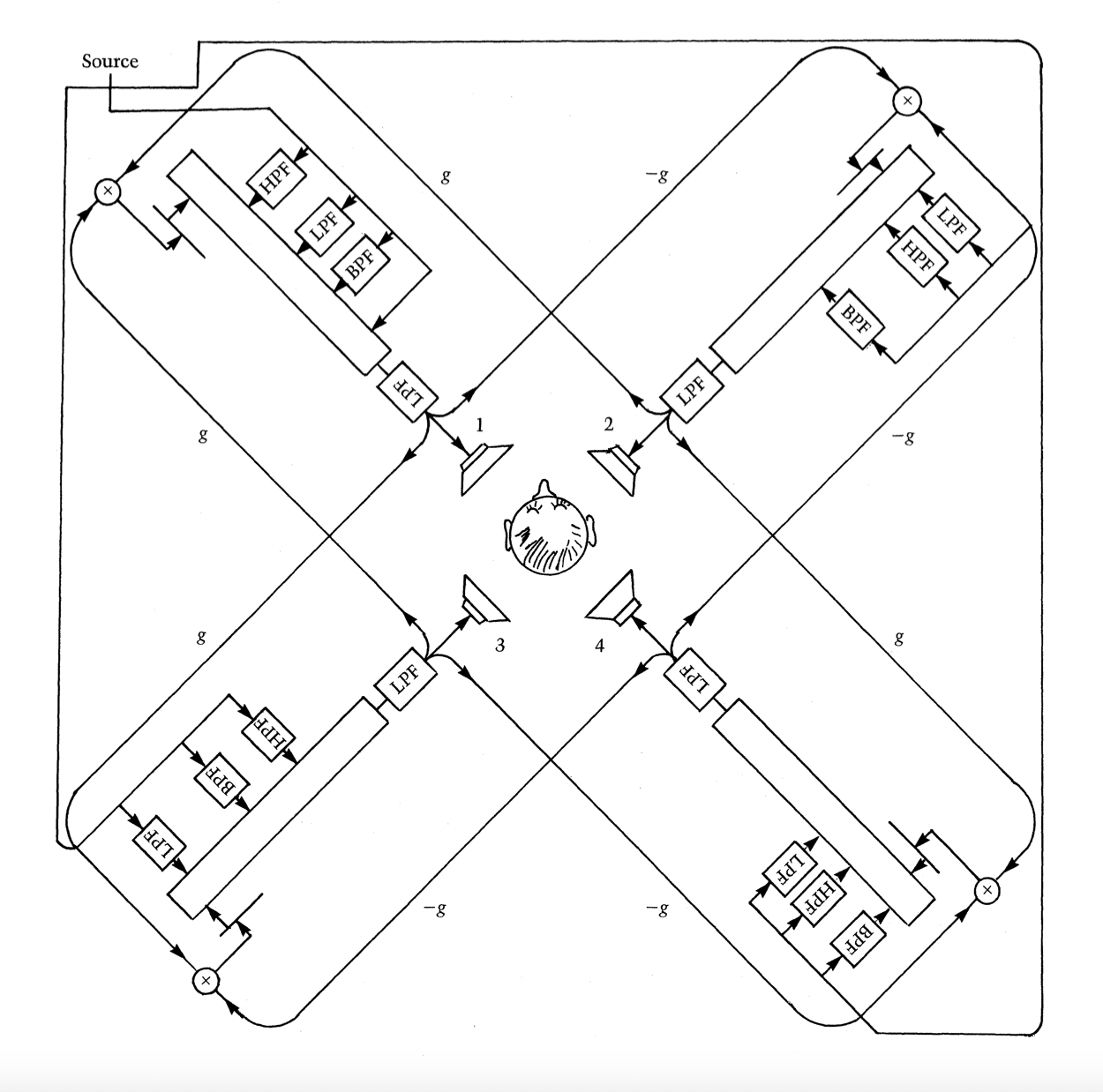A recent Gearslutz thread brought up an idea that I haven’t thought of in a long time: Binaural Beats.
The basic idea behind binaural beats is that if you have separate frequencies presented to the left and right ears, a beating sound will be perceived that is generated by the brain, as opposed to any physical process. For example, if you have a 300 Hz sine wave in the left ear, and a 310 Hz sine wave in the right ear, a beat frequency of 10 Hz would be perceived.
It has been postulated that binaural beats can be used for brainwave entrainment, where the brainwave frequencies fall in step with a given frequency. By doing so, the brain is supposed to enter into different states, corresponding to different rates of EEG activity. There have been a number of devices and sound files over the years that are designed to help listeners enter into a more desirable range of brainwave frequencies, such as alpha or theta.
I have to admit that I view the whole idea of binaural beats, or any specific audio patterns or tempos, as a method of inducing some mystical brain state with a fair degree of cynicism. Gilbert Rouget, in Music and Trance, discusses what anthropologist Jean Rouch has labeled the “strange mechanism.” The concept behind “the strange mechanism” is that the rhythms found in the music used during ceremonies associated with the trance state, such as Haitian voodoo, can directly trigger the transition to the trance state, through a process known as auditory driving. This flies in the face of the analysis of music found in trance-associated ceremonies, where the tempo of the music can vary wildly from culture to culture, and indeed within the same ceremony.
The auditory driving concept became popular during the early 1990’s, as rave culture exploded in popularity. The specific tempos found in the techno of the time were supposed to be the exact frequency needed to induce altered states of consciousness, and such ideas are still associated with trance music. To me, this is ignoring the other factors that often were at play in such circumstances, like MDMA, LSD, mushrooms, speed, cocaine, ketamine, robo, etc. It seems more likely to me that the rave “trance” state was just as culturally specific as trance states in other cultures, and not due to any magic properties of a given drum beat or tempo.
It is ironic that, considering my skepticism around the whole topic of binaural beats and auditory driving, I have produced a device that is ideal for experimenting with binaural beats. ValhallaFreqEcho can easily be set up to take any audio source, and produce a binaural beat pattern. Here’s how you do it:
- Set up the audio source in the DAW of your choice. On Macs, you can use Soundflower to stream audio from iTunes into a DAW.
- Instantiate ValhallaFreqEcho on the desired track
- Set Mix to 100% wet (1.0), Delay to its shortest value, Feedback to zero, LowCut to its minimum value, HighCut to its highest value, and output mode to stereo.
- Set Shift to the desired beat frequency. Note that a given frequency shift will result in a beat pattern of 2X the frequency shift. Example: a 2 Hz frequency shift will raise frequencies in the left channel by 2 Hz, and the right channel by 2 Hz, resulting in a beat pattern of 4Hz.
- For Theta waves, set the frequency shift between 2 and 3.5 Hz.
- For Alpha waves, set the frequency shift between 4 and 6 Hz.
Voila, trippy music for trippers! For added fun, set the delay to the desired length or tempo subdivision, and turn up the feedback. This will produce an echo that swirls around your head. Tune the swirl rate for the desired brainwave entrainment. Or, have the swirl rate (i.e. frequency shift) change rate during the track, to induce listeners to smoothly transition between different brainwave frequencies.
You can also use ValhallaFreqEcho to generate binaural beats without the use of any input signal. Just turn the feedback up to a high level, and play with the delay time, low cut, and high cut controls to produce self-oscillating echos that spin through your skull.
Will this trigger “the strange mechanism”? I dunno. I have found myself listening to ValhallaFreqEcho in some self oscillating mode late at night, suddenly aware that I have no idea how much time has passed. I just chalk this up to spending too much time in front of a compiler, or getting old, but maybe there is something deeper going on there. Try it out for yourself.*
*ValhallaDSP takes no responsibility for inducing seizures, murderous states, or becoming one with the all-seeing Eye at the center of the universe, through the use of ValhallaFreqEcho.
EDIT: Here is a quick video clip of ValhallaFreqEcho in binaural mode:






Sean,
it has always been interesting and very instructive to read your blogs!
Thanks for sharing your thoughts.
fran_ky
Thanks for posting here!
Strangely enough, CoolEdit, the earlier incarnation of Audition, had the binaural beat feature as an option to further mangle your mix. One nice feature was being able to have the beat frequency follow an envelope so that you could start with say a 2 hz beat and end with 10 hz beat with something else in the middle.
How did the CoolEdit binaural beats work? Was frequency shifting used, or did it add sine waves into the mix?
Ya got me there, I’m just a dumb-ass end user. I believe it was delay based (?), anyway there’s some info on the net – search “cooledit brainwave synchronizer”.